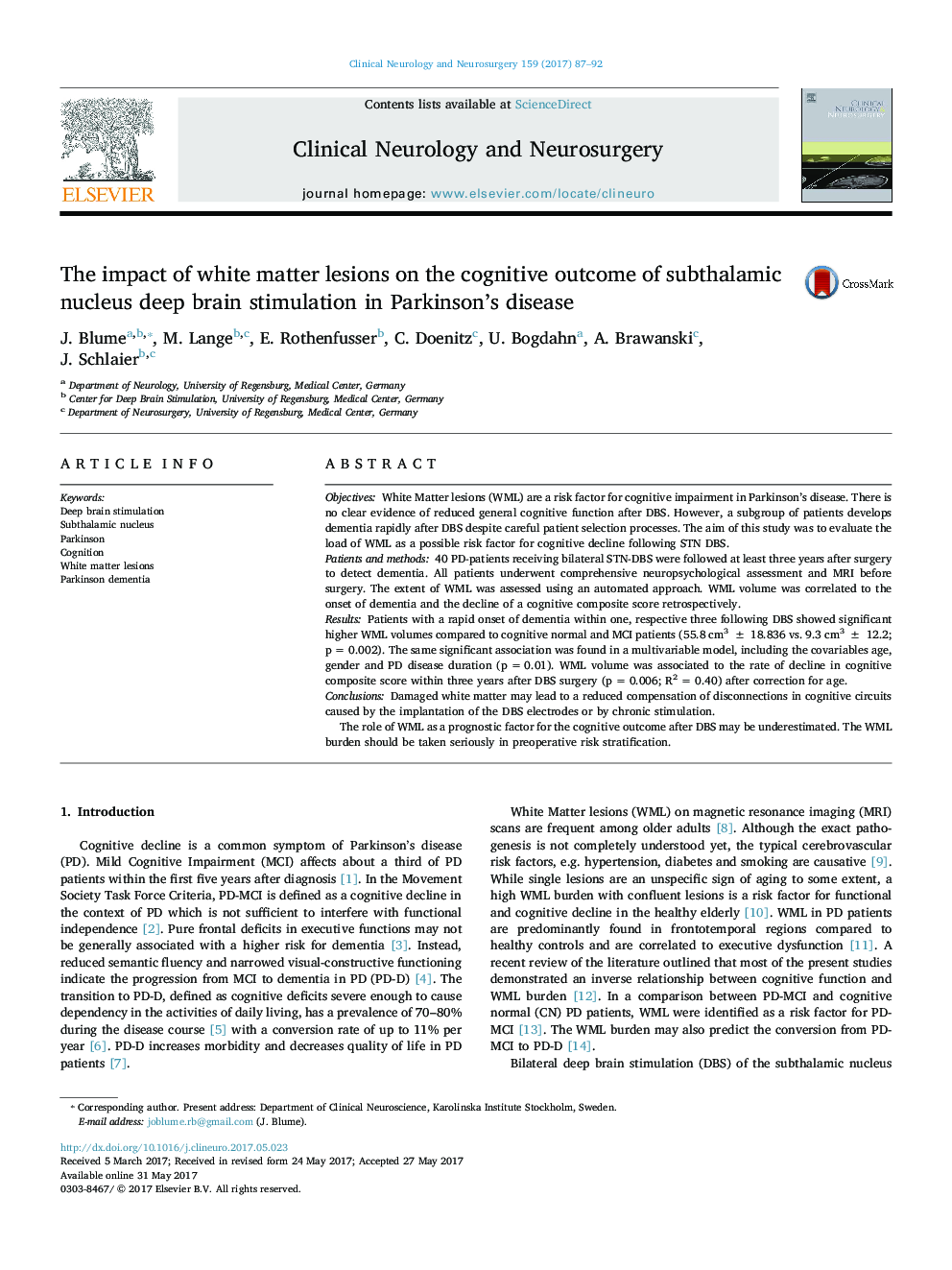| کد مقاله | کد نشریه | سال انتشار | مقاله انگلیسی | نسخه تمام متن |
|---|---|---|---|---|
| 5627018 | 1579663 | 2017 | 6 صفحه PDF | دانلود رایگان |
- High WML volume is associated to cognitive decline within three years after STN DBS.
- Increased WML burden is associated to early onset of dementia after STN DBS in PD.
- Role of WML as a prognostic factor for cognitive outcome after DBS may be underestimated.
- WML burden should be assessed in preoperative risk stratification for DBS.
ObjectivesWhite Matter lesions (WML) are a risk factor for cognitive impairment in Parkinson's disease. There is no clear evidence of reduced general cognitive function after DBS. However, a subgroup of patients develops dementia rapidly after DBS despite careful patient selection processes. The aim of this study was to evaluate the load of WML as a possible risk factor for cognitive decline following STN DBS.Patients and methods40 PD-patients receiving bilateral STN-DBS were followed at least three years after surgery to detect dementia. All patients underwent comprehensive neuropsychological assessment and MRI before surgery. The extent of WML was assessed using an automated approach. WML volume was correlated to the onset of dementia and the decline of a cognitive composite score retrospectively.ResultsPatients with a rapid onset of dementia within one, respective three following DBS showed significant higher WML volumes compared to cognitive normal and MCI patients (55.8 cm3 ± 18.836 vs. 9.3 cm3 ± 12.2; p = 0.002). The same significant association was found in a multivariable model, including the covariables age, gender and PD disease duration (p = 0.01). WML volume was associated to the rate of decline in cognitive composite score within three years after DBS surgery (p = 0.006; R2 = 0.40) after correction for age.ConclusionsDamaged white matter may lead to a reduced compensation of disconnections in cognitive circuits caused by the implantation of the DBS electrodes or by chronic stimulation.The role of WML as a prognostic factor for the cognitive outcome after DBS may be underestimated. The WML burden should be taken seriously in preoperative risk stratification.
Journal: Clinical Neurology and Neurosurgery - Volume 159, August 2017, Pages 87-92
